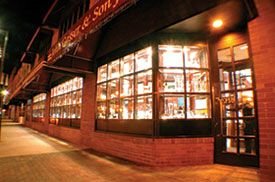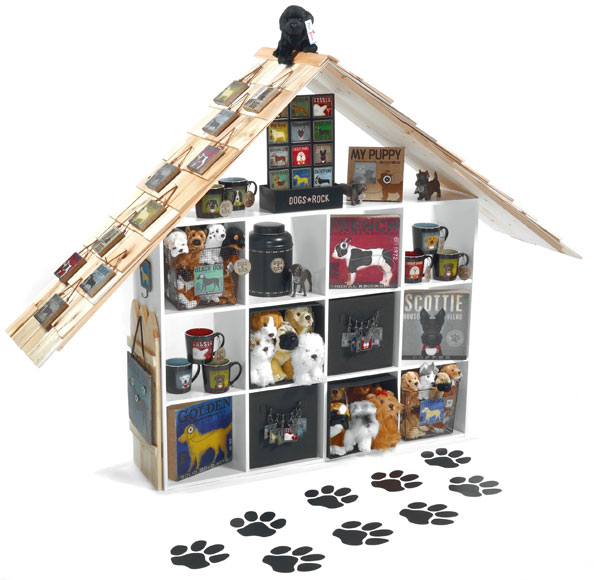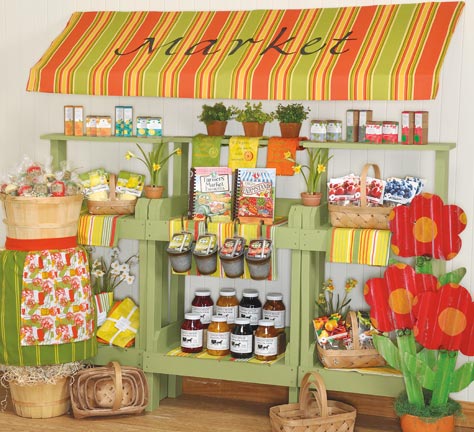Sales are up at the Bowdoinham Country Store in Bowdoinham, Maine, since it underwent a lighting makeover. Owner Dave Skelton won $2,500 worth of free lighting in an essay contest sponsored by the Central Maine Power Company. In his essay, Skelton described his 4,000-square-foot store as a community fixture that offers all kinds of goods including groceries, meats, sandwiches, coffee, cleaning supplies and household items.
Although people could find almost anything they needed at the store, customers told Skelton they had stopped shopping there because it was so dingy. The 30- to 40-year-old T12 fluorescent lights used throughout the store created a glare on the top shelves and made the lower shelves dim and shadowy. Some of the lights turned on with switches, others with pull strings, and a few were even unscrewed every night and screwed back in every morning. There were no lights at all in the beer or meat coolers, and employees didn’t feel safe outside the store because of the lack of light.
Skelton and his wife, Lia, had already made improvements to the store’s interior including new shelving, so they jumped at the chance to win new lighting. The contest makeover replaced the T12 lights with T8s. The newer ones look modern, are energy efficient, and provide more light and better color rendition.
“I feel better in the store than I used to,” says Skelton. “I feel more like working, and I know our sales have improved.” The employees also take more pride in the store. Customers frequently comment on how much cleaner and brighter the store is now. One Bowdoinham store customer even asked if the movie rental area and the skateboard display were new additions, when, in fact, the only change was the much-improved lighting.
“Patrons are in your shop to consider buying something,” says Brad Stewart, director of sales at Hera Lighting in Norcross, Georgia. Therefore, good lighting should draw a customer in while highlighting merchandise. If lighting is leaving products in shadows, there’s no decision as to what to buy because the shopper won’t be tempted to buy anything, whether they see it or not. Also, when only a top shelf of merchandise is lit, the light casts shadows on whatever is on the lower shelves, and customers don’t see those items.
“If you only use ceiling lights, you give up profit,” says Stewart.
By making your shop warm and inviting with the appropriate lighting, you put your customers in a good mood, and they’re more apt to buy.
“Lighting determines how long we stay in a store,” says Stewart. “Because 70 percent of retail purchases are impulse buys, the longer you get customers to stay in your store, the more likely they are to buy.”
Although it is important to provide good lighting for all your merchandise, you don’t want to make the mistake of lighting everything the same. “When the lighting is all the same, it makes it more difficult for the customer to make a buying decision,” says Michael Dwyer, vice president of national account sales for Juno Lighting Group in Carson, California. The next time you are in a dollar store, notice how all the products are lit the same. At these stores, all merchandise is equally priced. The store’s bottom line isn’t increased by which products customers buy, but by how many products are bought.
The same is not true in a gift shop. Certain items have a higher profit margin and should be illuminated more to create visual drama and interest. A study conducted by Hera Lighting showed how important strategically placed lighting is in drawing customers to a display. During a two-day time period, end-cap displays in two GNC stores in two New England malls were lit on alternate days. Cameras mounted outside the stores recorded the actions of every passerby for nine hours on the test days. When the display was lit, more shoppers entered the store, significantly more browsed the display and more than twice as many shoppers purchased what was on display.
Another benefit of good lighting is the accurate reflection of the color of your products. Products are often returned because when the customer brings the product home, the color isn’t what they thought it was. More often than not, inadequate lighting is to blame.
Well-planned lighting can help guide customers through your store and even draw them into the back of your shop.
“If your customers feel better in your store, then your employees will, too. Better lighting helps your staff sell more products because they are more comfortable in their environment,” says Dwyer. It also makes your shop a more enjoyable place to work.
As part of the Bowdoinham Country Store makeover, lights were added to the outside dumpster area, the parking lot and the storefront. “Now that my employees can see better, they feel safer and more secure,” says Skelton. “They even empty the garbage.”
Your employees will also appreciate good, bright lighting in the stockroom, so they can quickly find what they are looking for.
“When planning a lighting upgrade, the best advice is to consult with a retail lighting specialist,” says Jeff Grant, president of TRIO Display in San Diego, California. “It will be worth the cost because the single most important thing you can do in terms of overall sales is upgrade your lighting.”
Grant suggests using track lighting on well-merchandised displays to make them sing, low-wattage halogen lights in a showcase or wall case and built-in lighting, such as MR 16 halogen lights, around the store’s perimeter to create a halo effect.
Stewart adds that pendant lights over the cash-wrap desk work well since good lighting is crucial in this area. You don’t want the customer to see that her potential purchase isn’t the same color it was when she selected it from the shelf.
Grant notes that the style of the light fixture is much less important than the type of bulbs used. “You don’t want your customers looking at the ceiling and admiring your light fixtures the entire time they’re in your store,” he says. The goal of strategic lighting in your store is to enhance the products, not distract customers from looking at them.
Once you’ve invested in a lighting makeover or upgrade for your shop, you’ll want to maintain the ambience you’ve created. Stewart suggests using the same bulb size throughout your store as much as possible and buying your lights from a large lighting manufacturer, such as OSRAM Sylvania, Philips or GE Lighting. These simple steps will make it easier when ordering replacement bulbs.
“Buy extras so you can keep a small quantity of lamps on hand for replacement purposes,” says Stewart.
Stewart also suggests that you do a group relamping before the bulbs are due to expire. For instance, if you purchased 20,000-hour fluorescents, replace all of them at 15,000 hours. You don’t want to wait until the bulbs burn out before replacing them. If a bulb does burn out early, replace and document it so you don’t replace that one again during your next group relamping.
LED (Light-Emitting Diode) technologies are now ready for any application, says Stewart. They are economically viable and give a good color rendering to products.
The total cost of changing a halogen bulb twice a year is $10 to $15 per bulb. LED lights, on the other hand, last seven to ten years. They aren’t ultraviolet, won’t fade your product and, even though they are more expensive than halogen initially, they are 80 percent more energy efficient. A study conducted by the Lighting Research Center (LRC) showed that using LEDs in retail windows could cut lighting energy by 30–50 percent. That’s good to know, since according to the United States Department of Energy, lighting is the biggest energy expense for retailers, accounting for 37 percent of total energy use in U.S. retail buildings alone. LED lighting is available in a variety of colors and, in the LRC study, attracted more attention than traditional lighting.
The Energy Policy Act of 2005 gives tax incentives to energy-efficient buildings. If you install high-efficiency and high-benefit lighting, you can qualify for these tax incentives. Read more about this tax break at www.energy.gov/taxbreaks.htm.
No matter what kind of lighting you choose, if done properly, it will be an asset and allow you to recoup your investment, says Stewart.
Dwyer agrees with this and says good lighting acts like a silent salesperson—attracting and making the customer want your product.
Heather Larson is a freelance writer based in Federal Way, Washington.










